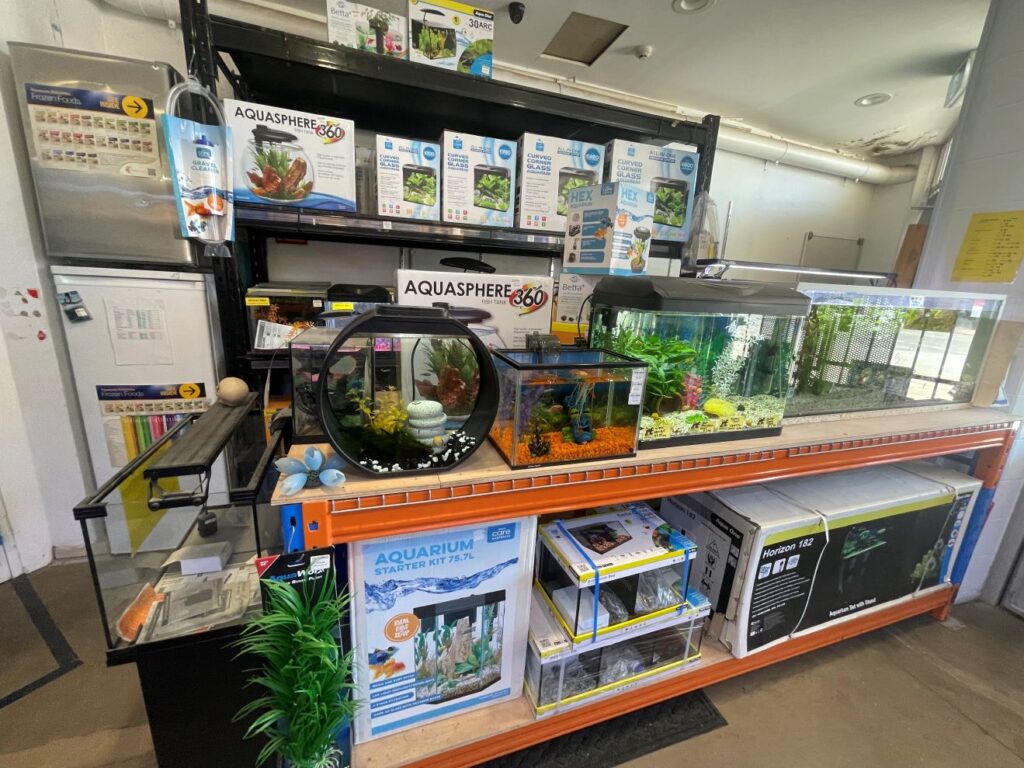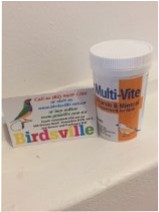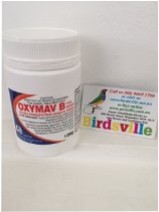Cold Water Fish Care
This article we will cover your first steps when bringing your cold water fish home, set up, safety precautions and what to do and choosing a cold water aquarium and more.
Picking out a cold water aquarium
Choosing the right aquarium will decide on a number of factors, your budget, as larger or better-quality aquariums cost more. The type of fish you want to keep, species that grow large such as goldfish or perch as they need a bigger tank than smaller species. The location, as you need an area that has a power supply to run the filter bubbler and possibly a light. knowing where you are setting up will help decide what size will suit the area best.
Some tanks are better suited to sitting on a table, an important note for larger glass tanks, that a foam underlay is important as the cold water aquarium becomes very heavy when water is added. Click the link The foam booth in Sydney Surry hills can cut foam to size.
Do not place the aquarium in a sunny well-lit space as you may have issues will algae control. Never place an aquarium in a busy thoroughfare as it will be a matter of time before it is damaged. Do not place your aquarium in a draft area such as an open window.
All needs to be considered when choosing a tank. There is no such thing as a tank too big for a fish, but the tank can be too big for the area. If you can only fit a very small tank, then you will need to choose Coldwater fish that will suit that kind of tank. We do stock many sizes of aquariums to see, best to visit us with measurements to get the best fitting tank. Or just visit for some aquarium inspiration.
The larger the aquarium the more stable the environment for the fish, bigger volumes of water will have slower fluctuations in water quality making it safer for its inhabitants. Because of this we always recommend getting the biggest tank possible.
All aquariums are best with some form of cover, which almost all of our aquariums come with. This stops fish from jumping out of the aquarium.
Setting up cold water aquarium
The first rule in keeping cold water aquarium fish is always rinse with tap water everything that goes into the tank. Everything we have mentioned in our checklist is included, nets, decorations, filters, and bubblers the list goes on. You don’t know if someone has handled a product/item with a chemical on their hands so always be safe and rinse everything. Fish are very sensitive.
When you have all the essentials listed in our checklist it’s now time to set it all up prior to introducing the fish.
The best way to start is by setting up everything 2 weeks prior to adding the fish and simply running the tank, this is called cycling the aquarium. You can purchase everything in a day and set up the tank and place the fish straight in but there is a risk of an ammonia build up occurring. This is because the beneficial bacteria added by the bio start haven’t had enough time to colonize the tank and filtration system. If you do want to quickly add fish, then its best to start with small amounts of fish.
Getting started Rinse the inside of the tank and then rinse the gravel before placing the gravel inside the bottom of the tank.
Now set up your filter, follow instructions on the pack, depending on what type of filter you have chosen.
Add plants and decorations, stones wood etc. we recommend leaving a clear area around the front of the aquarium as many fish like a free-swimming space and it allows for better viewing.
Use a rinsed piece of plastic to place over the gravel and then add water, so the water doesn’t dislodge all the gravel and proceed slowly fill up the aquarium. Make sure you fill the aquarium up properly as many filters will not function properly if the water level is too low.
Now add water conditioner directly into the water following instructions on the bottle, it’s difficult to overdose on water conditioner it’s not hard to use with the instructions on the bottle are easy to use.
Now add biostart, this must be done after properly mixing in the water conditioner as the chlorine from tap water that would kill the fish will also kill the beneficial bacteria the bio start adds.
Checklist of what you need in starting your aquarium.
Suitable sized tank: Think ahead in terms of adding fish in the future, max growth of selected fish and leaving space for ornaments/hides/plants
Gravel: Be sure to get enough gravel to adequately cover the bottom of tank to allow ornaments/plants to be secured. Roughly add around 3 to 5 cm. Rinse gravel in a bucket with a tap rinsing it until its clear before adding to aquarium.
Filtration: Many available at Petsville, some tanks come with them already, insure you get a filter suitable for your size tank or larger. Filters will come with recommended liters (if sized 1000, 2000, etc. simply divide by 10 liters) The filter will clean the water of the aquarium by filtering out Debree and the essential nitrification process. This is a process where beneficial bacteria work to keep your aquarium as healthy as possible. explained simply the fish consumes food and the waste that comes out of the fish creates ammonia. The bacteria converts this into nitrite and then the bacteria also converts the nitrite into nitrate. Nitrate is less harmful to the fish, the nitrate is removed by regular water changes.
Lighting: a very valuable part of any aquarium. Lights will make the fish colors pop, add life to the décor and help promote plant/fish health. The light also allows for the addition of aquatic plants and improves the health of the fish.
Aeration/bubbler: This is an air pump that will help oxygenate your ecosystem by pumping air through an airline that leads into the water. This will help keep your fish healthy as they can suffocate without enough dissolved oxygen. This process will result in cleaner circulated water and healthier fish.
Gravel vacuum. A must have this Reduces cleaning time whilst increasing water quality. Easily suctions debris and waste out of gravel out of tank into a bucket. The process of using this will remove fish poo, muck and simultaneously be a water change.
Fish net: Used to move or remove fish or anything else when doing tank maintenance.
Food: Essential ask our Petsville team on what options you have from flakes, pellets and frozen feed.
Water conditioner: Necessary when adding any tap water to any aquarium as it removes chlorine and metals from the water. Fish will die in straight tap water as it will burn their gills and they will asphyxiate.
Bio starter: Aquariums must have beneficial bacteria to function inside the filter media. Bacteria species added by this, and similar product are critical parts of the nitrogen cycle.
Waste controller. This additive will convert waste such as food & feces into positive bacteria. This minimizes cleaning and increases tank health.
Salt: Promotes fish health by improving gill function making it easier for fish to breath. Salt also adds electrolytes as a lack of electrolytes can cause serious health issues in fish, especially goldfish.
Before your fish arrive Have a holding pail (glass, plastic, or stainless steel) or an aquarium set up and filled with conditioned tap water before receiving your fish (you must chemically treat all Sydney tap water to remove chloramines to make it safe for animals that have gills. important note only use aquarium salt, table salt will kill your fish.
Algae cleaners: all well aquariums are going to have algae growth. Proper algae cleaners need to be made of the correct material that doesn’t damage the glass. Some of our options include floating magnetic glass cleaners, and various scrub and cleans, these will also remove stubborn algae, calcium and lime as well. We also have suckerfish and snails of different species; these guys do the hard work for you, Their elbow grease is limited to only remove the soft fast-growing algae, but they also are excellent creatures to keep.
pH test Kit: An important factor in determining good quality water is the pH, which is the measure of acidity and alkalinity. Sydney tap water regularly fluctuates quite a lot it’s pH. pH testing has never been easier as our ph testers are very simple to use.
The arrival of new fish
After you have chosen your fish and arrived home with your bag of fish make sure your cold water aquarium is all set up with all items from the checklist above and filled with water with water conditioner added. Make sure you check the pH and everything is ready for the new arrival of fish. Cold water fish generally do not need any heating. Everything listed is available with us in store.
The first 10 to 15 minutes, let the fish bag sit inside the aquarium water. This will allow the fish to acclimate to the same temperature of the tank. There is likely a temperature difference between the tank water and the water in the fish bag. Just releasing the fish without this process will cause stress as it could shock the fish which could result in fish death over time. After the 15 minutes its time to release the fish, use a fish net to gently scoop the fish out of the bag and place them into the aquarium. Discard the water in the fish bag by flushing it down the sink.
Do Not feed the fish in the first 24 hours of your fish arriving as they are often stressed from habitat transmission and feeding newly arrived fish does more harm than good.
Maintaining your cold water aquarium
Regular maintenance keeps your aquarium running properly and knowing what maintenance to do will help it run smoothly. In a natural environment , nature takes care of all the waste through natural processes, inside a glass aquarium without maintenance filters will clog, the water will putrify your fish will look unhappy or die and waste will decay. The only way to keep fish in a home aquarium is with regular maintenance.
Maintenance needs balance as too much cleaning will actually do the reverse of what you are trying to achieve. If you clean the filters too much it will kill off the beneficial bacteria and your tank will not run properly the ammonia will spike with a poor outcome for the fish.
Cleaning your aquarium needs to be done in stages and we have broken this down for you. So please keep reading.
Every 24 hours Health check, count and eyeball all fish checking their condition, The best time to do this is when they are having their daily feed. If it takes longer than 30 seconds to eat the pellets or flakes you have fed them too much.
Check the filter have good flow and bubbler lights and lights working.
Every 2 weeks Clean the glass, the fish are more enjoyable to watch through clean glass. Gently scrub ornaments, plants and fake plants to dislodge any Debree. Do a water change with the gravel vacuum. This process will clean/remove the waste from the gravel and also help get rid of the nitrates from the water. Do a water change, 30% should be sufficient and make sure you place water conditioner in the tank just before replacing the tap water. Water change process only takes about 10 minutes.
Once a month before doing water changes test the waters pH, ammonia, nitrate and nitrite levels.
During your every 2-week clean use the discarded water for the use of filter maintenance. Use this water to rinse the filter media and cartridges. This water will keep your beneficial bacteria alive during the cleaning process. Replace old and clogged filter media, avoiding replacing it all at the same time and keep part of the media to retain as much of the beneficial bacteria colony as possible. In about 4 weeks replace the remaining filter media.
live plants inspect and remove any dead leaves and trim back if they are over crowing the tank.
Maintaining your pond
Aquarium decorations Sydney
no matter what decorations you have chosen, weather they are man made of natural rocks they will need to be rinsed. We supply different kinds of wood, already soaked wood ready to go, these usually have a slow growing plant attached to them called anubias. These are very popular and add wow factor to the aquarium. We also sell various types of dry wood; this will need to be soaked around 2 weeks until it sinks and releases its tannins.
FAQs
What should I do with the water in the shipping bag? Discard all the shipping water by flushing it down a sink with tap water. It contains waste products given off by the fish during shipment and you should not add it to your aquarium.
Why is the shipping water blue? This is due to a medication we add to the water to reduce shipping stress on the fish.
The fish are probably hungry, so I should feed them, right? The fish need time to recover and become familiar with their new environment. Wait a day before feeding them.
How much food should I feed the fish? Feed the fish only as much as they can eat in a few minutes. Don’t feed them more than once a day. Any food that the fish do not eat may become food for bacteria. Too many bacteria can deplete the water’s oxygen content, stressing the fish and other animals in the aquarium.
How do I know if my fish are healthy? A healthy fish is active, keeping its fins erect and spread. A diseased fish may have drooping fins or fins tightly pressed against its body, spends a lot of time hiding, have fuzzy patches growing on itself, or long streamers or slime that trail from its fins or body. Observe your fish for any changes in behavior or appearance over time. Remove a diseased fish before it transmits its disease to others. Sometimes one fish bully another, causing the bullied fish to hide even though it is healthy. Place the fish in different aquariums if possible.
At Petsville we have a variety of fish that will do well in a cold-water environment such as an outdoor pond on an aquarium that doesn’t have a heater installed. Our cold-water fish come in a variety including goldfish, suckerfish, rosy barbs, zebra danio, white cloud minnow, paradisefish, Endler guppies, sword tails, variatus platty, bloodfin tetra, catfish and there is some a may have forgotten to mention. Our Petsville store is open 7 days a week with parking out the front.


